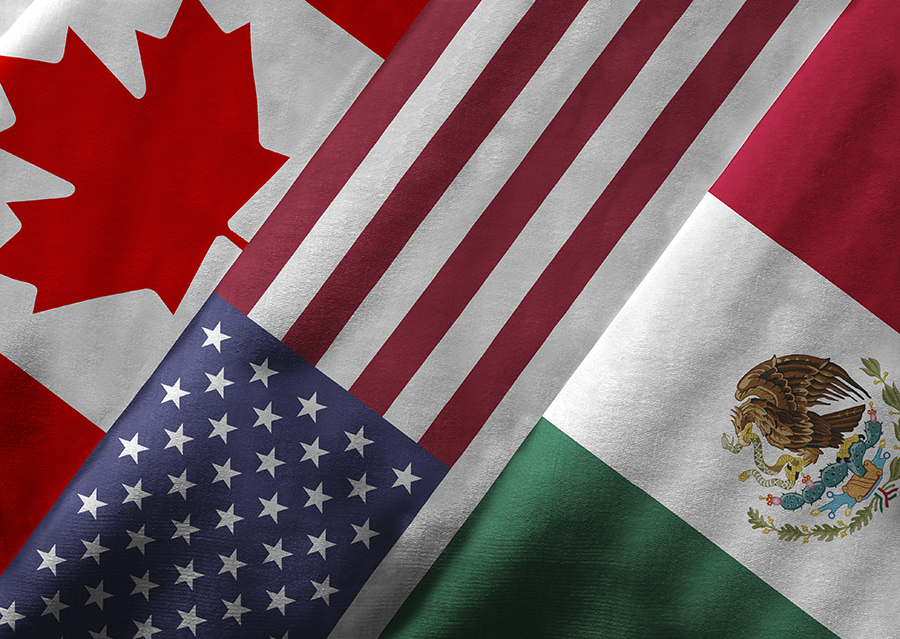 In a major milestone for the farmer-managed export assistance program, Cooperatives Working Together (CWT) has helped its member dairy cooperatives export over 1 billion pounds worth of milk so far in 2018. That sum represents 50 percent of the overall rise in U.S. milk production through August of this year.
In a major milestone for the farmer-managed export assistance program, Cooperatives Working Together (CWT) has helped its member dairy cooperatives export over 1 billion pounds worth of milk so far in 2018. That sum represents 50 percent of the overall rise in U.S. milk production through August of this year.
“This is a huge milestone, not just for the members of CWT, but also for the wider U.S. dairy industry,” said Jim Mulhern, president and CEO of NMPF. “CWT’s success at ensuring nutritious dairy products reach customers all over the world demonstrates the importance of dairy cooperatives coming together to build a better economic future for our dairy community.”
Founded in 2002, CWT is a voluntary membership program funded by contributions from NMPF’s member cooperatives and more than 100 individual farmers. The funds raised from the CWT membership fee of $0.04/cwt. help maintain U.S. exports in an increasingly competitive world market.
Mulhern noted that “with milk production rising around the world, as well as in the United States, CWT helps maintain and build market share for our products as we tap into growing consumer demand across the globe for made-in-America dairy products.”
In August, CWT helped its member cooperatives to secure 48 contracts to sell 3.229 million pounds of American-type cheeses, 877,440 pounds of butter and 14.76 million pounds of whole milk powder to customers in Asia, Central America, the Middle East, North Africa, Oceania and South America. The product will be shipped to buyers in 11 countries in four regions of the world during the months of August 2018 through March 2019.
These contracts bring the 2018 total of CWT-assisted product sales to 46.68 million pounds of cheese, 12.96 million pounds of butter, and 41.44 million pounds of whole milk powder. These transactions will help CWT’s members sell a total of 1.043 billion pounds of milk, on a milkfat basis.
Assisting CWT member cooperatives gain and maintain world market share through the Export Assistance program expands the long-term demand for U.S. dairy products and the U.S. farm milk that produces them. This, in turn, positively impacts all U.S. dairy farmers by strengthening and maintaining the value of dairy products that directly impact their milk price.
The amounts of dairy products and related milk volumes reflect current contracts for delivery, not completed export volumes. CWT will pay export assistance to the bidders only when export and delivery of the product is verified by the submission of the required documentation.
All cooperatives and dairy farmers are encouraged to add their support to this important program. Membership forms are available online.

 The July monthly margin under the Margin Protection Program (MPP) was $6.72/cwt., $0.65/cwt. lower than the June margin, owing mostly to lower milk prices. The July all-milk price was $15.40/cwt., $0.90 lower than in June, as the full effect of the retaliatory tariffs imposed by Mexico and China on various U.S. dairy imports rippled through U.S. domestic markets. The July MPP feed cost formula was $0.25/cwt. lower than the month before. Most of the drop in the monthly feed cost was split evenly between lower corn and lower soybean meal prices, when calculated on a per-hundredweight-of-milk basis.
The July monthly margin under the Margin Protection Program (MPP) was $6.72/cwt., $0.65/cwt. lower than the June margin, owing mostly to lower milk prices. The July all-milk price was $15.40/cwt., $0.90 lower than in June, as the full effect of the retaliatory tariffs imposed by Mexico and China on various U.S. dairy imports rippled through U.S. domestic markets. The July MPP feed cost formula was $0.25/cwt. lower than the month before. Most of the drop in the monthly feed cost was split evenly between lower corn and lower soybean meal prices, when calculated on a per-hundredweight-of-milk basis. The Senate and the U.S. House of Representatives have returned to Capitol Hill from their August recess to tackle several pressing matters before adjourning again for the fall campaign season.
The Senate and the U.S. House of Representatives have returned to Capitol Hill from their August recess to tackle several pressing matters before adjourning again for the fall campaign season. The Trump Administration made major strides in recent weeks to finalize negotiations over a new North American Free Trade Agreement (NAFTA), but the biggest issue for America’s dairy farmers – whether they will earn more market access to Canada – remains unresolved in early September. This high-stakes, high-visibility challenge is the key area where NMPF is heavily engaged this month on achieving a positive outcome for its members.
The Trump Administration made major strides in recent weeks to finalize negotiations over a new North American Free Trade Agreement (NAFTA), but the biggest issue for America’s dairy farmers – whether they will earn more market access to Canada – remains unresolved in early September. This high-stakes, high-visibility challenge is the key area where NMPF is heavily engaged this month on achieving a positive outcome for its members. Dairy farmers can now sign up for their share of the multi-billion-dollar trade assistance package developed by the U.S. Department of Agriculture (USDA), although the amount available in direct payments – just $127 million, or 12 cents per hundredweight on half of a farm’s annual production – falls far short of what NMPF had asked USDA to allocate.
Dairy farmers can now sign up for their share of the multi-billion-dollar trade assistance package developed by the U.S. Department of Agriculture (USDA), although the amount available in direct payments – just $127 million, or 12 cents per hundredweight on half of a farm’s annual production – falls far short of what NMPF had asked USDA to allocate.
 The National Milk Producers Federation welcomed the announcement today by the U.S. Department of Agriculture that it will purchase $50 million worth of fluid milk for distribution to domestic food assistance programs – the first time the agency has bought milk for use in this manner.
The National Milk Producers Federation welcomed the announcement today by the U.S. Department of Agriculture that it will purchase $50 million worth of fluid milk for distribution to domestic food assistance programs – the first time the agency has bought milk for use in this manner. To help maintain the important role that dairy foods play in the diets of young children, NMPF has been pushing back against misguided World Health Organization (WHO) policies that would discourage the consumption of dairy products by kids under age 3.
To help maintain the important role that dairy foods play in the diets of young children, NMPF has been pushing back against misguided World Health Organization (WHO) policies that would discourage the consumption of dairy products by kids under age 3. Progress toward a successful renegotiation of the North American Free Trade Agreement (NAFTA) continues this summer, with NMPF reminding U.S. negotiators that Mexico – unlike Canada – has been a model for open dairy trade with the United States, and that no export market is more important to dairy farmers than that of our southern neighbor.
Progress toward a successful renegotiation of the North American Free Trade Agreement (NAFTA) continues this summer, with NMPF reminding U.S. negotiators that Mexico – unlike Canada – has been a model for open dairy trade with the United States, and that no export market is more important to dairy farmers than that of our southern neighbor.



